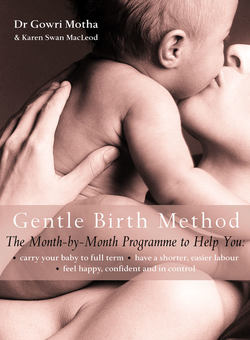Читать книгу The Gentle Birth Method: The Month-by-Month Jeyarani Way Programme - Karen MacLeod Swan - Страница 29
The Origins of the Treatment Programme
ОглавлениеAs the number of women presenting congested vaginas and enormous babies continued to rise, I realized my role as a Senior Registrar meant I was simply becoming an expert in crisis management. By the time I became involved in the mother’s care, there was rarely anything I could do to help them, except intervene with forceps, ventouse or scalpel. It saddened me and was not why I had entered the profession. Every birth is a miracle, and should be a personal triumph for every woman. Why was it so rapidly becoming something fewer and fewer women could achieve without help? I fully believed doctors and the medical establishment should be investigating preventative measures that would help women prime their bodies for birth, before they went into labour. The diet I devised was certainly a step towards helping women control the size of their babies and condition their bodies for birth – but it wasn’t a coping mechanism for the realities of labour. It came as a flash to me that all I needed to do was to create a total birthfitness programme and to make the mother birthfit so that they could have the gentle birth they wanted. Hence I began researching front line treatments that would boost the detoxifying effects of the diet but also help with pain management.
It was at this time that Michel Odent conducted the first waterbirth, in Pithiviers general hospital near Paris in France. The idea of mothers delivering their babies in water excited my interest. When an opportunity to meet Odent came up, I jumped at the chance and learnt what clinical conditions he created for the waterbirths.
It all sounded quite simple, but knowing the hospital wouldn’t indulge my ‘fancies’, I purchased a pool from my own pocket and put it in a room at the far end of the obstetric corridor in Whipps Cross Hospital. I instructed the midwives – some of whom clearly thought I’d lost my marbles – to let me know of any mothers who were interested in the idea of a waterbirth and soon a few did come forward. Imagine my frustration then, when after a few hours of staying in the pool, they would politely ask to go back to their rooms.
It was clear that sitting in the water in itself wasn’t enough to reduce the pain of labour, nor to shorten it. So, with a group of seven mothers – I call them my ‘pioneer mothers’ – we started some self-hypnosis classes, incorporating visualizations and learning how to breathe and relax, thereby adding a mental element to the birth preparations.
At the same time, I was approached by two reflexologists, Mary Martin and Helen Chittick, who volunteered their services to the antenatal clinic on a Friday afternoon. The benefits of reflexology in helping certain medical conditions, such as high blood pressure, were already well documented, so I was willing to refer mothers with high blood pressure to be treated with reflexology. In every single one of these cases, the mother’s blood pressure went down. Word quickly spread through the clinic and I started getting mothers presenting with different problems. I remember one mother in particular, who had developed severe Diastasis Symphysis Pubis in her pregnancy (DSP causes severe pubic pain and instability as the pubic joint begins to separate under pressure from the pregnancy and the influence of pregnancy hormones). Her condition was so painful that she couldn’t walk and had to use a wheelchair. However, after just three reflexology treatments, she was able to get out of her wheelchair and walk again. I was very impressed. Along with this clinical antenatal success, we made another startling discovery – those mothers who had received reflexology treatments delivered their babies in much shorter times. Some mothers were delivering in 5-6 hours, as opposed to the commonly observed 18-hour labours. One 46-year-old woman delivered within a few hours of being in labour, which made me realize that it’s not your chronological age that determines your birth experience, but your biological age. A toxic lifestyle – i.e. smoking, alcohol, junk food and a lack of exercise – can make the tissues of a woman in her twenties function rather poorly; conversely an older mum can function amazingly well physiologically if she commits to a healthy lifestyle with optimum nutrition and a physical fitness programme.
